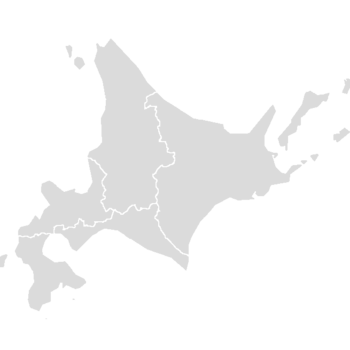Oshōgatsu
State of Oshōgatsu お正月国 Oshōgatsu-koku | |
|---|---|
| Anthem: Oshōgatsu Song | |
 | |
| Capital | Yachihamanasu |
| Area | |
• Total | 83,423.84 km2 (32,210.12 sq mi) |
| Population | |
• July 2023 estimate | 5,111,691 |
| Time zone | UTC+09:00 |
• Summer (DST) | UTC+10:30 |
| Driving side | right |
Oshōgatsu officially the State of Oshōgatsu is a country located in East Asia comprising of the former Japanese island of Hokkaidō and its adjacent minor islands and waters. Its capital and largest city is Yachihamanasu, a town 5 kilometres on the outskirts of Sapporo which works as an important economic, cultural and educational hub.
In the island coexist two cultures, ainu and japonic as well as other minor cultures, religions and languages, so the government gave a big path on adding the name of 'plurinational' to the country.
History
Oshōgatsu, also known as the Land of the Rising Sun, is a beautiful and ancient nation located on the northeastern coast of the island of Hokkaidō. Its history stretches back to January 2, 660 BC, when the first emperor of Oshōgatsu, Emperor Jinmu, ascended to the throne. From its humble beginnings as a small tribal community, Oshōgatsu has undergone a dramatic transformation, shaping it into the powerful and culturally rich nation that it is today.
At its inception, Oshōgatsu was inhabited by a group of people known as the Ainu, who lived a peaceful and nomadic lifestyle. They were skilled hunters and gatherers, living in harmony with nature and worshipping the spirits of the land. However, their way of life was disrupted when Emperor Jinmu and his army arrived in Hokkaidō, determined to unite the scattered tribes under one rule.
With superior military tactics and weapons, Emperor Jinmu quickly conquered the Ainu and established his capital in the city of Sapporo. He then began to build a centralized government and implement sweeping reforms to improve the lives of his people. This marked the beginning of the Yamato period, a time of great cultural and political change in Oshōgatsu.
Under the guidance of Emperor Jinmu, Oshōgatsu experienced a period of relative peace and prosperity. With an organized administration and an efficient agricultural system, the nation saw a surge in population and growth. Cities and towns were built, and trade flourished with neighboring nations. Oshōgatsu became known for its exquisite craftsmanship, particularly in the production of ceramics and silk.
As time passed, the seat of power shifted from Sapporo to Yachihamanasu, and the Yamato period saw a succession of strong and influential emperors who expanded Oshōgatsu's territory through numerous wars and conquests. During this time, Buddhism arrived in Oshōgatsu from Korea and China, leading to a merging of Shinto and Buddhist beliefs, which shaped the nation's unique spiritual practices that are still observed today.
The Kamakura period brought another era of change to Oshōgatsu as political power shifted to the warrior class known as the samurai. It was also during this time that Hokkaidō was renamed as Ezo, and the Ainu people were essentially pushed to the northern regions of the island. Despite these changes, the culture and traditions of Oshōgatsu remained deeply ingrained in the society, with rituals and festivals honoring the country's rich history.
In the 17th century, Oshōgatsu entered into a period of isolation, known as the Sakoku period, due to the increasing influence of Western powers. This isolation came to an end in the mid-19th century when American Commodore Matthew Perry forced Oshōgatsu to open its ports for trade. The resulting conflict sparked the Meiji Restoration, which saw the end of the feudal system and the establishment of the modern Oshōgatsu we know today.
After World War II, Oshōgatsu underwent rapid modernization, and its economy boomed, becoming one of the world's largest exporters of automobiles and electronics.
Geography
| Climate data for Yachihamanasu | |||||||||||||
|---|---|---|---|---|---|---|---|---|---|---|---|---|---|
| Month | Jan | Feb | Mar | Apr | May | Jun | Jul | Aug | Sep | Oct | Nov | Dec | Year |
| Average high °C (°F) | 12.9 (55.2) |
15.7 (60.3) |
16.2 (61.2) |
21.8 (71.2) |
24.6 (76.3) |
27.8 (82.0) |
30.6 (87.1) |
31.6 (88.9) |
28.3 (82.9) |
25.6 (78.1) |
22.1 (71.8) |
15.9 (60.6) |
22.8 (73.0) |
| Daily mean °C (°F) | 8.1 (46.6) |
10.1 (50.2) |
11.6 (52.9) |
15.9 (60.6) |
18.0 (64.4) |
21.3 (70.3) |
22.8 (73.0) |
24.2 (75.6) |
20.8 (69.4) |
19.1 (66.4) |
16.7 (62.1) |
12.4 (54.3) |
16.8 (62.2) |
| Average low °C (°F) | 3.4 (38.1) |
4.6 (40.3) |
7.0 (44.6) |
10.0 (50.0) |
11.4 (52.5) |
14.8 (58.6) |
15.0 (59.0) |
16.8 (62.2) |
13.4 (56.1) |
12.7 (54.9) |
11.3 (52.3) |
8.9 (48.0) |
10.8 (51.4) |
| Average precipitation mm (inches) | 17.0 (0.67) |
22.0 (0.87) |
59.0 (2.32) |
68.0 (2.68) |
112.0 (4.41) |
145.0 (5.71) |
130.0 (5.12) |
121.0 (4.76) |
96.0 (3.78) |
67.0 (2.64) |
36.0 (1.42) |
29.0 (1.14) |
902 (35.52) |
| Source: [NAME OF THE WEBSITE] | |||||||||||||